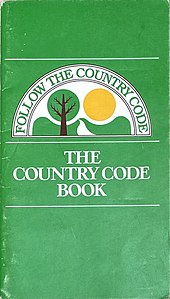
The Country Code and The Countryside Code are sets of rules for visitors to rural, and especially agricultural, regions of the United Kingdom. The Country Code dates back to the 1930s and the Countryside Code replaced it in 2004.

The Country Code and The Countryside Code are sets of rules for visitors to rural, and especially agricultural, regions of the United Kingdom. The Country Code dates back to the 1930s and the Countryside Code replaced it in 2004.
The Country Code evolved from the work of various organisations and had several different versions from the 1930s. The most widely accepted version of The Country Code was published in 1981 by the Countryside Commission: [1]
In the 1960s and 70s the Country Code was publicised by several public information films shown in cinemas and on television. [2]
At some point after 1981, the instruction to fasten all gates was replaced with one to instead leave gates as found. [3]
In 2004 The Country Code was revised and relaunched as The Countryside Code (Côd Cefn Gwlad in Welsh) to reflect the introduction of new open access rights and changes in society over the preceding years. The revised Code was produced through a partnership between the Countryside Agency and the Countryside Council for Wales
In early July 2020, the Westminster government published an amended short version of the code online during the COVID-19 pandemic as lockdown was being eased across England to help manage public access to the countryside under the changed circumstances. [4]
In Scotland, where there is a more general right of access, Scottish Natural Heritage developed The Scottish Outdoor Access Code, which was approved in draft form by the Scottish Parliament in July 2003 following the passing of the Land Reform (Scotland) Act of the same year, and was accepted in February 2005. The Scottish Outdoor Access Code differs significantly from The Country Code in that it promotes access rights that include crossing over land and non-motorised recreational activities like walking, cycling, angling and horse riding, and will normally apply in all rural settings. The basis of access rights over land (in Scotland) is of shared responsibilities, in that those exercising such rights have to act responsibly, following the Scottish Outdoor Access Code, while land owners/managers have a reciprocal responsibility in respecting the interests of those who exercise their rights. [5]
The Scottish code "is based on three key principles [which] apply equally to the public and to land managers": [6]
Three additional principles apply to visitors: [7]
Both the Countryside Code and the Scottish code provide guidance for land managers as well as visitors.

The national parks of Scotland are managed areas of outstanding landscape where some forms of development are restricted to preserve the landscape and natural environment. At present, Scotland has two national parks: Loch Lomond and The Trossachs National Park, created in 2002, and the Cairngorms National Park, created in 2003.

NatureScot is the operating name for the body formally called Scottish Natural Heritage. It is an executive non-departmental public body of the Scottish Government responsible for the country's natural heritage, especially its natural, genetic and scenic diversity. It advises the Scottish Government on nature conservation, and acts as a government agent in the delivery of conservation designations, i.e. national nature reserves, local nature reserves, national parks, Sites of Special Scientific Interest (SSSIs), Special Areas of Conservation, Special Protection Areas and the national scenic areas. It receives annual funding from the Government in the form of Grant in Aid to deliver Government priorities for the natural heritage.

The Wildlife and Countryside Act 1981 is an Act of Parliament in the United Kingdom implemented to comply with European Council Directive 79/409/EEC on the conservation of wild birds. In short, the act gives protection to native species, controls the release of non-native species, enhances the protection of Sites of Special Scientific Interest and builds upon the rights of way rules in the National Parks and Access to the Countryside Act 1949. The Act is split into 4 parts covering 74 sections; it also includes 17 schedules.

Leave No Trace, sometimes written as LNT, is a set of ethics promoting conservation of the outdoors. Originating in the mid-20th century, the concept started as a movement in the United States in response to ecological damage caused by wilderness recreation. In 1994, the non-profit Leave No Trace Center for Outdoor Ethics was formed to create educational resources around LNT, and organized the framework of LNT into seven principles.

A footpath is a type of thoroughfare that is intended for use only by pedestrians and not other forms of traffic such as motorized vehicles, bicycles and horses. They can be found in a wide variety of places, from the centre of cities, to farmland, to mountain ridges. Urban footpaths are usually paved, may have steps, and can be called alleys, lanes, steps, etc.

The freedom to roam, or "everyman's right", is the general public's right to access certain public or privately owned land, lakes, and rivers for recreation and exercise. The right is sometimes called the right of public access to the wilderness or the "right to roam".
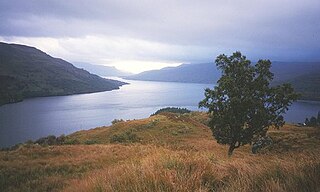
Loch Lomond and The Trossachs National Park is a national park in Scotland centred on Loch Lomond and the hills and glens of the Trossachs, along with several other ranges of hills. It was the first of the two national parks established by the Scottish Parliament in 2002, the second being the Cairngorms National Park. The park extends to cover much of the western part of the southern highlands, lying to the north of the Glasgow conurbation, and contains many mountains and lochs. It is the fourth-largest national park in the British Isles, with a total area of 1,865 km2 (720 sq mi) and a boundary of some 350 km (220 mi) in length. It features 21 Munros and 20 Corbetts.
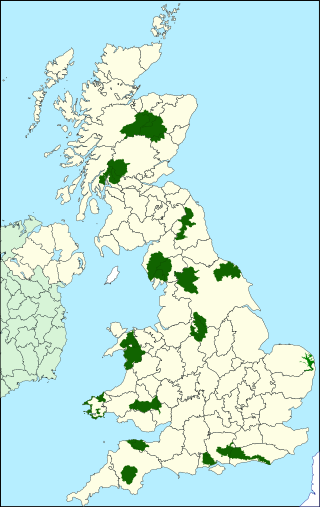
National parks of the United Kingdom are areas of relatively undeveloped and scenic landscape across the country. Despite their name, they are quite different from national parks in many other countries, which are usually owned and managed by governments as protected community resources, and which do not usually include permanent human communities. In the United Kingdom, an area designated as a national park may include substantial settlements and human land uses that are often integral parts of the landscape. Land within national parks remains largely in private ownership. These parks are therefore not "national parks" according to the internationally accepted standard of the IUCN but they are areas of outstanding landscape where planning controls are a little more restrictive than elsewhere.
A country park is a natural area designated for people to visit and enjoy recreation in a countryside environment.

The Environmental Protection Act 1990 is an Act of the Parliament of the United Kingdom that as of 2008 defines, within England and Wales and Scotland, the fundamental structure and authority for waste management and control of emissions into the environment.

Leave the gate as you found it is an important rule of courtesy in rural areas throughout the world. If a gate is found open, it should be left open, and if it is closed, it should be left closed. If a closed gate absolutely must be traversed, it should be closed again afterwards. It applies to visitors travelling onto or across farms, ranches, and stations.
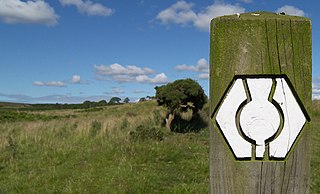
Scotland's Great Trails are long-distance "people-powered" trails in Scotland, analogous to the National Trails of England and Wales or the Grande Randonnée paths of France. The designated routes are primarily intended for walkers, but may have sections suitable for cyclists and horse-riders; one of the trails, the Great Glen Canoe Trail, is designed for canoeists and kayakers. The trails range in length from 40 km (25 mi) to 340 km (210 mi), and are intended to be covered over several days, either as a combination of day trips or as an end-to-end trip.

A bridle path, also bridleway, equestrian trail, horse riding path, ride, bridle road, or horse trail, is a trail or a thoroughfare that is used by people riding on horses. Trails originally created for use by horses often now serve a wider range of users, including equestrians, hikers, and cyclists. Such paths are either impassable for motorized vehicles, or vehicles are banned. The laws relating to allowable uses vary from country to country.
Cave conservation is the protection and restoration of caves to prevent or minimise the effects of human activities.
Walking is one of the most popular outdoor recreational activities in the United Kingdom, and within England and Wales there is a comprehensive network of rights of way that permits access to the countryside. Furthermore, access to much uncultivated and unenclosed land has opened up since the enactment of the Countryside and Rights of Way Act 2000. In Scotland the ancient tradition of universal access to land was formally codified under the Land Reform (Scotland) Act 2003. In Northern Ireland, however, there are few rights of way, or other access to land.
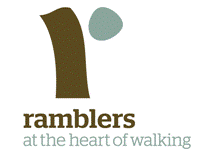
The Ramblers is the trading name of the Ramblers Association, Great Britain's leading walking charity. The Ramblers is also a membership organisation with around 100,000 members and a network of volunteers who maintain and protect the path network. The organisation was founded in 1935, and campaigns to keep the British countryside open to all.
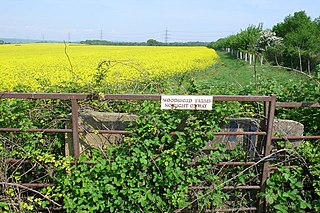
Right of way is the legal right, established by grant from a landowner or long usage, to pass along a specific route through property belonging to another. A similar right of access also exists on land held by a government, lands that are typically called public land, state land, or Crown land. When one person owns a piece of land that is bordered on all sides by lands owned by others, an easement may exist or might be created so as to initiate a right of way through the bordering land.

Carnfunnock Country Park is a 191-hectare park located between Drains Bay and Ballygally, near Larne, County Antrim, Northern Ireland. It is situated on the A2 Antrim Coast Road, 3.5 miles north of Larne. The park consists of mixed woodland, gardens, walking trails and coastline with views of the Antrim Coast and North Channel. and is owned and run by Mid and East Antrim Borough Council.

National scenic area (NSA) is a conservation designation used in Scotland, and administered by NatureScot on behalf of the Scottish Government. The designation's purpose is to identify areas of exceptional scenery and to protect them from inappropriate development. There are currently 40 national scenic areas (NSAs) in Scotland, covering 13% of the land area of Scotland. The areas protected by the designation are considered to represent the type of scenic beauty "popularly associated with Scotland and for which it is renowned". As such they tend to be mainly found in remote and mountainous areas, with a review in 1997 noting a potential weakness of national scenic areas was that the original selection placed undue emphasis on mountainous parts of the country. National scenic areas do however also cover seascapes, with approximately 26% of the total area protected by the designation being marine. The designation is primarily concerned with scenic qualities, although designated national scenic areas may well have other special qualities, for example related to culture, history, archaeology, geology or wildlife. Areas with such qualities may be protected by other designations that overlap with the NSA designation.
The Scottish Outdoor Access Code provides detailed guidance on the exercise of the ancient tradition of universal access to land in Scotland, which was formally codified by the Land Reform (Scotland) Act 2003. Under Scots law everyone has the right to be on most land and inland water for recreation, education and going from place to place providing they act responsibly. The basis of access rights in Scotland is one of shared responsibilities, in that those exercising such rights have to act responsibly, whilst landowners and managers have a reciprocal responsibility to respect the interests of those who exercise their rights. The code provides detailed guidance on these responsibilities.